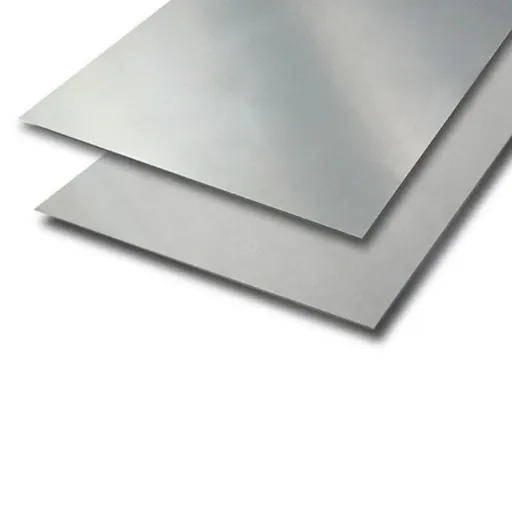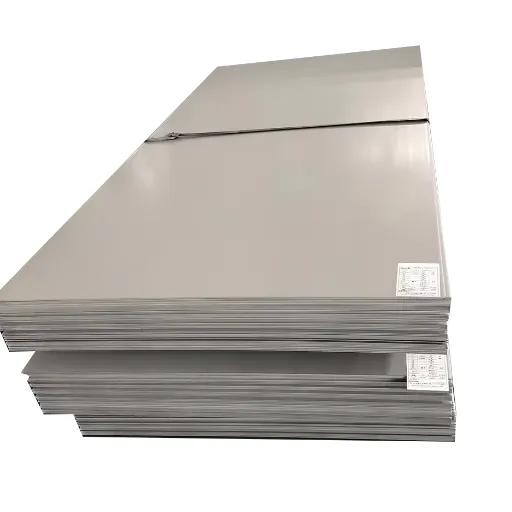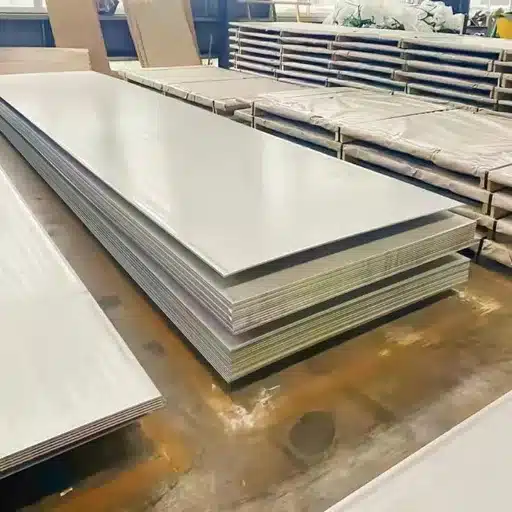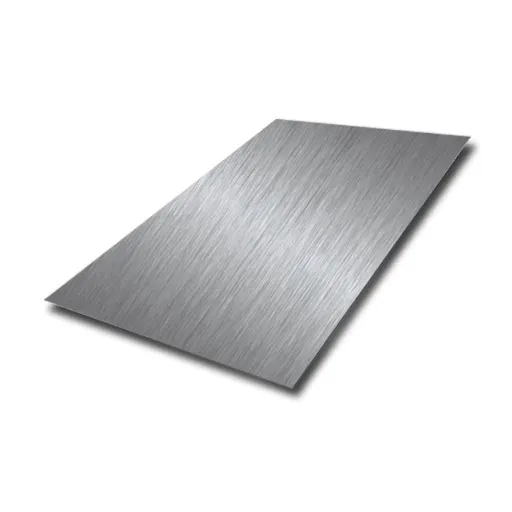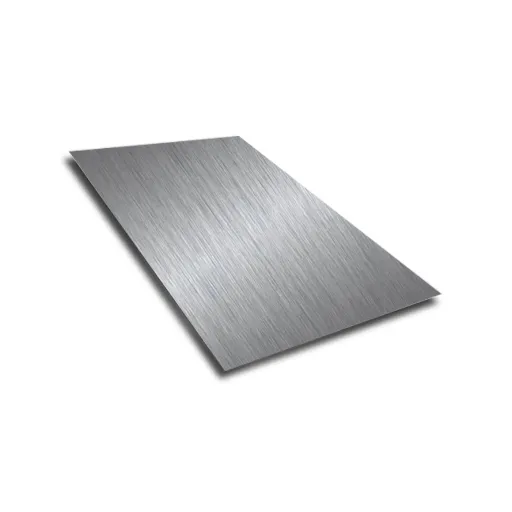When it comes to material selection, and especially for durability and versatility, fewer options can match stainless steel-the 304 stainless steel sheet, in particular. It has been considered best of all stainless steels in regions where corrosion resistance, strength, and beauty are appreciated. From construction to manufacturing, from food processing to the medical field-the name of 304 stainless steel is always held high.
So, what about this material makes it in such great demand? This guide explores the principal characteristics, uses, and benefits of 304 stainless steel in detail. If you are an industry professional, fabricator, or just someone who wants to know more about this wonderful material, here you get everything you need to make an informed decision regarding its use!
Introduction to Stainless Steel Metal Plates
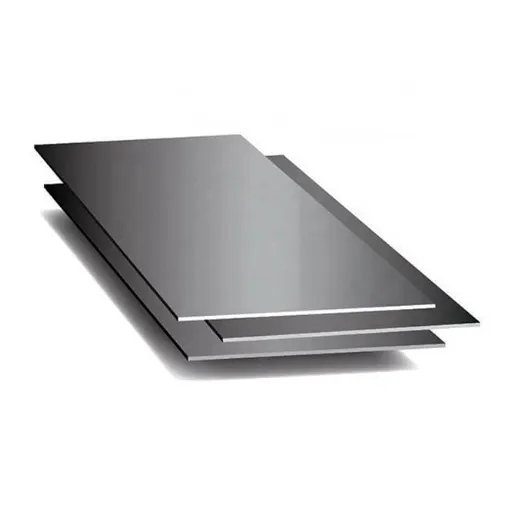
What are Stainless Steel Metal Plates?
Stainless steel metal plates are flat, thick sheets of stainless steel used in a large variety of industrial, commercial, and architectural applications. They are known for their immense strength, resistance to corrosion, and the ability to endure harsh environmental conditions. Stainless steel plates come in various grades and specifications to cater to the needs of various industries. Grade 304 and Grade 316 stainless steel are the two most common variants used owing to their balanced performance and adaptability.
The major constituent elements of these plates are iron, chromium, and other alloying elements like nickel and carbon. Chromium imparts long-term rust- and oxidation-protecting qualities to the surface by forming a thin oxide layer that is self-repairing. Additional treatments such as polishing, annealing, and coating may be applied to the stainless steel plates depending upon the application for better physical properties or appearance.
Manufacturing, construction, energy production, and food processing definitely appreciate their use of stainless steel metal plates. Their resistance to chemical attacks, moisture, and temperature variation makes them literally indispensable in places where failure and short life span cannot be an option. Being the perfect balance between strength, aesthetics, and resistance, stainless steel metal plates forever stand as an indispensable material in industries.
Significance in the Materials Industry
Stainless steel metal plates hold a place of significance in the materials industry with almost unparalleled combinations of durability, corrosion resistance, and versatility. They simply must be there, capable of standing extreme heat, extreme pressure, and chemical attack in manufacturing conditions where they demand strength and reliability. To name but a few, they are utilized in the construction of industrial equipment, structural parts, and storage vessels, assuring performance over time in adverse weather.
Another major element in effecting modern developments in technology and infrastructure is dependent on stainless steel plates to build infrastructure in furtherance of roadways, buildings, and bridges, wherein integrity and safety are of utmost consideration. Furthermore, they changed the food processing and medical industries by meeting the requirements of hygiene and sterility since they are resistant to all attacks. It is this application versatility that has cemented their importance in these industries up to the present time.
♻️ Sustainability Highlight
The sustainability of this material further increases its stature. Being almost 100% recyclable without any degradation/purity loss, stainless steel concurs with the worldwide efforts in developing Green products and sustainable solutions. The ability to reuse and recycle stainless steel lets you lessen environmental impact, lessen the burden on raw material sources, and endorse circular economy initiatives. For all these reasons, stainless steel metal plates remain an important resource for industrial operations in efficiency and sustainability.
Versatility and Durability of Stainless Steel
Stainless steel enjoys a reputation for being highly versatile, capable of functioning in almost any setting and application: construction, fabrication, the health industry, and even automotive engineering. Depending on the finish and grade, stainless steel is manufactured to meet various functional requirements: from architectural structures for aesthetics to hardened components or tooling for heavy machinery. Stainless steel can be considered versatile since its chemical composition can be adjusted to a set of properties such as corrosion resistance, heat resistance, or high tensile strength.
Another notable quality offered by this metal is durability. Stainless steel provides good durability because it resists rusting, heat, and chemical attacks under adverse environmental conditions. In essence, the stainless steel lasts longer since it requires less frequent replacement or repair. Thus, it has given long-term cost and operational efficiencies. Many industries that require the best performance with very low maintenance choose stainless steel for this exact reason.
In mechanical terms, stainless steel is subjected to mechanical stress and wear for long periods; thus, it finds applications in the limits of structural and functional importance. From instruments for the medical industry, where sanitization is of the utmost importance, to pipes and structures in the industrial sector, which are exposed to substances that are corrosive substances, stainless steel will always be a good solution and above all, durable. Its versatility and durability alone prove to be the cornerstones for every modern engineering and innovative solution.
Properties of Stainless Steel Metal Plates
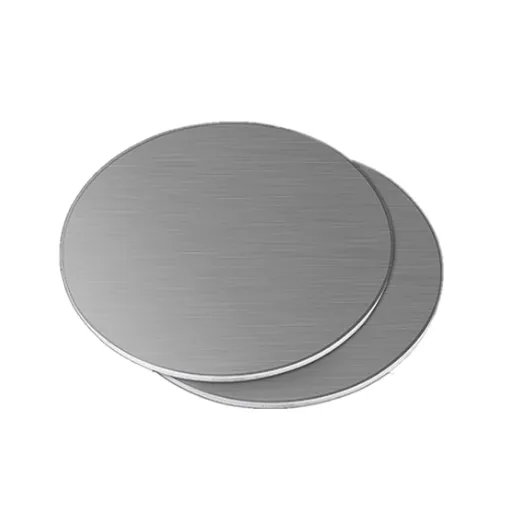
Corrosion Resistance and Strength
Stainless steel metal plates exhibit an extremely high resistance to corrosion, an attribute that stems mostly from chromium content. Chromium reacts with atmospheric oxygen to give a thin oxide film on the surface, called the passive layer. This layer acts as a shield and protects the precious metal from corrosive influences like moisture, acids, and chloride solutions, and hence, the stainless steel would be an ideal choice for environments prone to chemical exposure or hostile weather conditions. For example, stainless steel of Grade 316 with higher molybdenum content offers better resistance to chlorides and marine environments.
💪 Strength Characteristics
Apart from being known for its corrosion resistance, stainless steel metal plates are well known fortheir excellent strength and durability. These materials are mechanically well accepted, giving the best performance in tensile and yield strength, the latter being important for buildings under heavy loads or subjected to impact. Additional strengthening of stainless steel is possible by means other than heat treatment, such as by cold working or by alloying with nickel, molybdenum, or nitrogen.
Combining corrosion resistance with strength almost doubles the working life of stainless steel metal plates, thereby limiting the frequency of any replacements and repairs. Higher durability and low upkeep often speak for an initial investment that most other materials cannot even dream of. Stainless steel not only saves on future expenditures but also leans toward sustainability by being recyclable. Thanks to its retention of high performance over extended periods, it is a truly critical material in modern engineering and industrial innovation.
Heat Resistance and Recyclability
Heat resistance stands out as a stainless steel attribute, regarded highly because of many applications across industries. Since stainless steel can withstand extreme heat conditions without degradation, it is guaranteed to withstand exposure to heat wherever it finds application. Among others, austenitic grades like 304 and 316 perform very well under rather high temperature conditions that go up to about 870°C (1600°F) in intermittent and continuous service. For very demanding applications, some heat-resistant grades such as 310 and 446 are used and can operate safely at temperatures of and above 1150°C (2100°F). This also decreases, together with thermal deformation, in corrosion to a great extent, which is why stainless steel is used for heat exchangers, furnace construction, and power generation equipment.
🔥 Temperature Resistance
Up to 1150°C (2100°F)
For specialized high-temperature grades
♻️ Recycling Rate
80-90% Globally
Without quality degradation
Another compelling aspect that contributes largely to the sustainability features is the recyclability of stainless steel. In principle, stainless steel is almost entirely recyclable; that is, stainless steel products at the end of their life can go through the remelting process and conversion to new steel without encountering any loss of quality. Stainless steel is predominantly recycled, currently known to be at rates of 80-90% globally. Under this process, it saves the consumption of raw materials such as iron ore and chromium. This closed-loop recycling process not only helps conserve our natural resources but in doing so conserves quite a bit of energy since stainless steel from recycled materials consumes less energy as compared to stainless steel from virgin materials. Stainless steel thus becomes an environmentally sustainable solution in sectors where sustainability is valued.
The combination of heat resistance and recyclability continues to make stainless steel known for its unmatched versatility and durability. Beyond just technical performance, the steel supports initiatives around the world to create a circular economy for the reduction of carbon footprint. Depending on the industry, ranging from construction to automotive engineering, the material is used for not only its immediate service life but also as an investment toward environmental benefits through extended life. These two facets-applying stainless steel under extremely heated conditions and favoring sustainable end-use-make stainless steel an indispensable material in present-day engineering to guarantee operational excellence and optimizations for the future.
The Role of Chromium in Stainless Steel
Chromium is the defining agent for stainless steels. It is therefore a crux element in corrosion resistance, in durability, and in their functional properties. Chromium will create a thin layer of oxide that will adhere to the surface and prevent oxidation of this metal. Hence, this oxide layer acts as a self-healing thin film that will restore itself every time its surface is scratched or damaged, thus ensuring this stainless material will preserve its integrity over time. Some of the important properties imparted to stainless steel by chromium include:
- Corrosion Resistance: At least 10.5% chromium should be present in stainless steel to allow the formation of a passive oxide film that will prevent rust and corrosion. This corrosion resistance is effective in several environments, such as marine, industrial, and chemical industries.
- Enhanced Durability: Chromium contributes to the hardness and tensile strength of stainless steel and helps make it dependable in structurally demanding applications. High-chromium grades are usually employed in industrial applications subject to extended wear and stress.
- High-Temperature Resistance: At elevated temperatures, chromium offers excellent protection against scaling and oxidation, thus making stainless steels suitable for heat exchangers, ovens, and engine applications.
- Aesthetic Appeal: Chromium confers stainless steel with the sheen and smooth finish that architectural and decorative applications highly appreciate.
- Flexibility in Alloy Design: Different chromia contents enable grades to be created with properties that are customized to particular industries. For example, duplex stainless steels combine high chromium with nitrogen and molybdenum for very good strength and corrosion resistance.
The particular role that chromium plays makes it essential in defining the whole functionality and versatility of stainless steel in diverse industries.
Benefits Compared to Other Materials
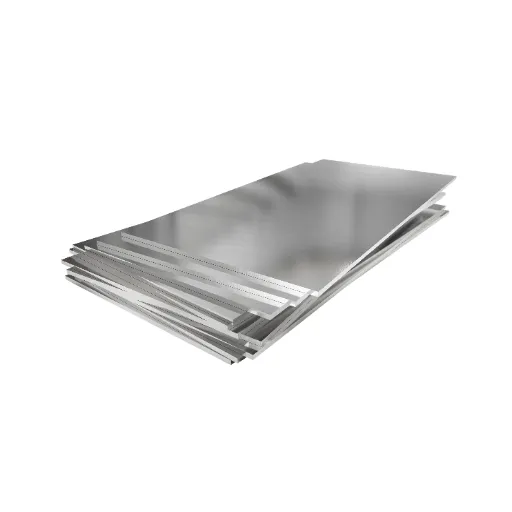
Durability and Longevity Over Alternatives
By virtue of its unique amalgamation of chemical and physical properties, stainless steel proves to be durable and long-lasting compared to other materials. These benefits are, in turn, backed by accumulated data and experience on real-life applications. Downtrodden are five fundamental defining qualities being time-tested and ultra-durable:
🛡️ Corrosion Resistance
Depending on the environment, stainless steel may suffer from corrosion, but in harsh ones, corrosion hardly ever stands a chance, whether moisture is in question, some chemicals are involved, or it is a saline environment. This resistance is imparted owing to the passive chromium oxide layer formed by the metal on its surface, which is auto-healing if damaged. Some studies claim that for more than 50 years in much of these environments stainless steel will outperform materials like carbon steel or certain alloys that begin rusting and disintegrate within a few seasons in this environment.
💪 Strength and Toughness
With a higher tensile strength, stainless steel can resist deforming or breaking under great physical stress in any instance of either relatively slight or very extreme load. Duplex stainless steels, being almost twice as strong as common austenitic steels, are thus suited to high structural demand applications in contrast to alternatives like aluminum or mild steel.
🔧 Low Maintenance Requirement
Due to their resistance to mechanical wear and tear, staining, and corrosion, stainless steel and stainless steel alloys need minimal maintenance during their lifetime. On the other hand, materials like wood rot or untreated mild steel need to be regularly painted, but stainless steel seems to keep shining there with just a little dirt wiped from its surface.
🌡️ Resistance Against Extreme Temperatures
Certain grades of stainless steel, such as 304 and 316, retain structural integrity as well as resist oxidization when exposed to high temperature, whereas materials like plastic or low-grade steel will simply disintegrate in no time. At the other extreme are cryogenic temperatures, which stainless steel will bear without getting brittle, thereby standing it very well for chemical processing and refrigeration applications.
♻️ Environmental Sustainability and Recyclability
Stainless steel is fully technically recyclable with no loss in quality; hence, it can enjoy a very high recycling rate in comparison with plastics or composite alternatives. This characteristic of recyclability promotes longevity in juxtaposition to frequent replacemen,t environmental implications in the manufacturing of new materials.
These detailed factors altogether make stainless steel the go-to material in those industries requiring durability, reliability, and lifecycle optimization.
Environmental Impact and Cost-Effectiveness
A good material from the sustainability-economic viewpoint is stainless steel. Some benefits can be enumerated against measurable:
- ♻️ Recyclability and Material Recovery:
Stainless steel is fully recyclable, with some 80 percent being recovered worldwide. As such, stainless steel saves landfill space and reduces pressure on the extraction of virgin raw materials, thereby making it an environmentally friendly choice. - ⚡ Energy-Efficient in Making:
By virtue of improving technologies in stainless steel manufacturing, energy consumption has been reduced by approximately 40 percent over the last 20 years. Contemporary production plants put emphasis on the reduction of emissions and use of renewable energy sources, therefore forcing the carbon footprint of stainless steel production down. - ⏰ Long Life and Reduced Replacement Cost:
Being long-lasting, stainless steel can maintain service for an extended time compared to other materials. Products made from stainless steel would serve for several decades without the need for replacement, thus helping to save on maintenance costs and resource consumption. - 🛡️ Reducing Waste through Corrosion Resistance:
The stainless steel gets degraded when corrosion creeps in, which requires frequent restoration or often replacement. That, in turn, will save money and help to reduce the waste linked to the degraded material alternatives. - 💰 Economic Incentives for Recycling:
Stainless steel recycling methods are reflected in the cost savings and production of high-grade secondary material, which has not suffered any kind of degradation in terms of performance. Thus, it will be recycled and used in another production cycle within the framework of the circular economy, reducing costs and the consumption of resources throughout production for a secondary product.
These factors combine to render stainless steel a material endorsing sustainability while conferring economic benefits. This implies the existence of an orange culminate capable of meeting both environmental and financial targets and ensuring its continuing relevance in the major industries.
Comparison with Aluminum and Mild Steel
The mechanical properties of stainless steel are strength and corrosion resistance, while aluminum is light and malleable in nature. On the other hand, mild steel is affordable and high in strength but corrosive by nature.
| Aspect | Stainless Steel | Aluminum | Mild Steel |
|---|---|---|---|
| Durability | High | Moderate | High |
| Mass | Heavy | Light | Heavy |
| Resistance | Excellent | Good | Poor |
| Expense | High | Moderate | Low |
| Flexibility | Moderate | High | Moderate |
| Efficiency | Low | High | Low |
| Thermal Limit | High | Low | High |
| Usage | Architecture, Medical | Aerospace, Electronics | Construction, Frames |
Types and Finishes Available
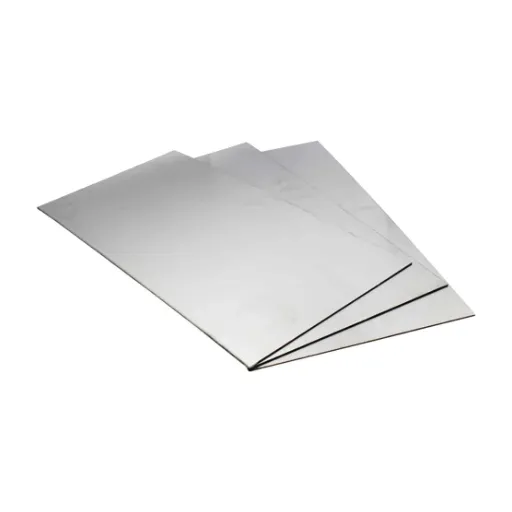
Different Grades of Stainless Steel: 304 vs 316
Stainless steels of 304 and 316 grades are commonly used as the austenitic variety of stainless steels, each having a peculiar balance of properties suitable for specific applications.
Grade 304
Composition: Iron, chromium (18-20%), nickel (8-10.5%)
Grade 304 is composed mostly of iron, chromium ranging about 18-20%, and nickel about 8-10.5%. Because of its good resistance to corrosion, 304 stainless is commonly used in an environment that sees more exposure to fresh water, some mild chemicals, and atmospheric conditions. It has good durability, good formability and good weldability, all of which are important characteristics in kitchenware, industrial fabrications, and architectural fittings.
⚠️ Limitation: Lower chloride resistance
Grade 316
Composition: Grade 304 + molybdenum (2-3%)
On the other hand, grade 316 contains approximately 2-3% molybdenum, which greatly enhances its capability to resist chlorine-induced pitting and corrosion. This advantage places it in great utility for marine, chemical processing, and pharmaceutical manufacturing industries, where, despite grade 304 being cheaper, the need for such corrosive environments makes the cost a price worth paying in end uses.
✅ Advantage: Superior high-temperature tensile strength
🎯 Selection Guidelines
Hence, between the two grades, considerations should indeed be made concerning exposure conditions, budget considerations, and strength or chemical resistance requirements that may be specific to the project at hand. When downgrading to general-purpose applications, grade 304 remains a good choice, while the 316 grades are preferred where chloride resistance and durability come first. By these differentiations, materials will thus be selected to suit operational efficiency and environmental requirements.
Available Finishes: Brushed, Polished, and Matte
🔄 Brushed Finish
A brushed finish is applied when the treatment surface is polished using a specialized abrasive, giving it a unidirectional texture. This results in a more satin-like appearance, characterized by fine parallel lines running along the material, which serve the purpose of hiding scratches and fingerprints.
Best For: Architectural detailing, kitchen appliances, and industrial works where beauty and practicality are equally important.
✨ Polished Finish
Produced through tremendous buffing and polishing, this finish assumes an awfully reflective surface and is esteemed for its mirror-like quality. It is mostly used further in environments that demand that they remain clean and luxurious in appearance, such as in high-end interiors and for decorative panels or precision engineering components.
Note: Susceptible to scratches and stains, requiring greater maintenance.
⚫ Matte Finish
Matte finishes acquired, for instance, by bead blasting or acid etching, offer a smoother surface that diffuses light evenly with an L-shaped glare. This finish favors subtlety while at the same time standing strong against attrition and glare.
Ideal For: Industrial equipment, architectural projects, and outdoor applications where minimized visibility of wear is paramount.
The different types of finishes each bear unique visual and resultant functional characteristics tailored to suit specific usages. In consideration of brushed, polished, or matte finishes, environmental conditions, reflectivity expectations, and maintenance considerations should all be carefully weighed so as to realize a finish solution that best performs and aesthetically identifies with the project.
Impact of Finishes on Aesthetics and Functionality
Surface finishes greatly influence the aesthetics and functional performance of materials in construction on a project. When carefully selected and applied, they provide durability, ease of maintenance, and ensure the realization of the desired aesthetic vision. Outlined below are five major impacts of finishes and their technical and functional implications:
💡 Reflectivity and Light Diffusion
For instance, polished or mirror finish surfaces reflect light to the maximum level. They are purposefully used to generate light in a given space. A reflective light surface can offer passive solar advantages to such an extent that it may not require artificial lighting. On the other hand, a matte texture will disperse light in order to reduce glare, giving a soft effect to human perception of space, thus being the choice in places with very low reflection of light-in-art-gallery.
🛡️ Wear and Tear Resistivity
Finishes would have varying degrees of resistivity with respect to wear. For example, when high traffic is expected, surface treatments performed to make the finish impervious to scratching and wear are considered more favorable. Polished finishes, which give greater visual appeal, tend to show marks and unattractive signs of wear and therefore should be considered on a case-by-case basis in heavily used applications.
🛡️ Corrosion Resistance
Surface finishing, therefore, can provide a method of protection from environmental factors. Anodized aluminium or powder-coated treatments, for instance, are good for resisting corrosion so that the material can last longer outdoors or in high moisture conditions. Some reports indicate that a clear-coated finish improves corrosion resistance by about 80% when compared to the bare untreated surface.
🧽 Cleanability and Maintenance
These highly polished finishes are smooth to the touch and easy to clean without water penetrating into the surface. Such finished home is almost an ideal fit for hospitals and food processing plants where hygiene is an utmost priority. Conversely, the rough texture of the finish would demand a rigorous cleaning regime; however, at times, it could hide dirt or fingerprints fairly well in highly used areas.
🎨 Visual Perception and Design Versatility
Finishes define the interaction of the surface with the surrounding environment. For example, a very reflective finish lends a modern, futuristic glitz, whereas a matte or brushed texture endows surfaces with a sense of warmth and sophistication.
By giving careful consideration to these attributes, designers and engineers can select finishes that best serve the functional performance and visual harmony of a material, ensuring it meets concerns for both technical realization and aesthetic realization.
Maintenance Tips for Stainless Steel Metal Plates
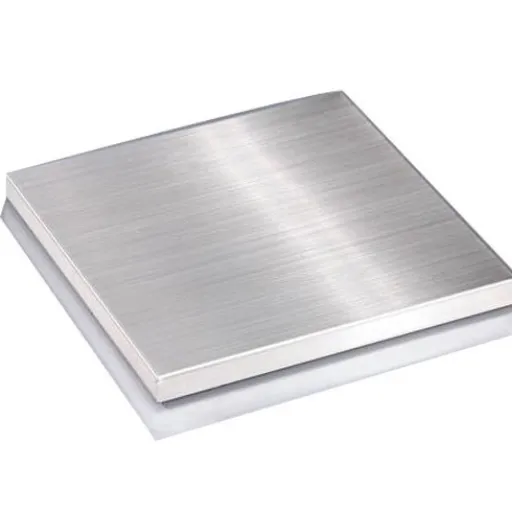
Cleaning Methods for Optimal Care
🧽 Basic Cleaning Protocol
The stainless steel metal plates need to be maintained by means of consistent and methodical cleaning to preserve their appearance and utility. The first and foremost step is to wash the surface with mild detergent, warm water, and a soft cloth or sponge efficiently. Avoid abrasive pads or harsh cleaning agents, as they may scratch or erode the very protective oxide layer of stainless steel, thus undermining its corrosion resistance. I prefer to rinse thoroughly and then dry immediately with a soft, lint-free cloth to avoid water spots and streaks.
🔍 For Tough Stains
For tough stains or grease, consider employing a stainless steel cleaner or a baking soda-water paste for a gentle yet effective treatment. Always rub in the direction of the steel grain for consistency and to keep unnecessary marks from forming on the surface.
✨ For Fingerprints & Smudges
If smudges or fingerprints are an issue, diluted white vinegar applied with a microfiber cloth will do the job, restoring a streak-free finish.
💎 Long-term Maintenance
On a long-term basis, periodic maintenance activities of polishing with a non-abrasive stainless steel polish are recommended to promote the shine of the metal and to the creation of an extra protective layer.
By following the aforementioned scheme, one can prevent the structural integrity of the stainless steel metal plates while providing a great deal of protection for their aesthetic beauty for many years.
Avoiding Scratches and Damage
In order to evade scratches and damage, I make use of materials that are used in a manner suited to the care of stainless steel surfaces. First and foremost, I always clean with soft microfiber cloths or non-abrasive pads that minimize the risk of marking or wearing down the surface. One must be careful to avoid abrasive brushes, steel wool, etc., as these materials can produce permanent surface damage.
❌ Avoid These
- • Abrasive brushes
- • Steel wool
- • Bleach or chloride
- • Sharp objects
✅ Use These Instead
- • Microfiber cloths
- • Non-abrasive pads
- • Mild cleaners
- • Protective pads
Whenever confronted with stubborn staining or dirt, I use cleaning agents that are mild, non-abrasive, and devoid of chemicals such as bleach or chloride. These corrosive substances tend to eat away at stainless steel with prolonged exposure, so I ensure to use stainless steel-safe products only. Also, cleaning must always proceed in the direction of the grain of the stainless steel finish and not against it to drastically minimize damage to the surface.
🛡️ Protective Measures
Finally, measures are taken to minimize any unnecessary contact of stainless steel surfaces with sharp objects. Using placemats or protective pads under cookware, utensils, or other equipment that potentially come in contact with a stainless steel surface is one such method. These precautions extend to avoiding dragging anything across stainless steel whenever possible, choosing instead to lift items to move them. Following these preventative measures ensures stainless steel maintains its hard-wearing and smooth appearance for the long term.
Preventing Rust and Discoloration
To prevent rust and discoloration in stainless steel surfaces, it is important to bear in mind the chemical interactions that can disintegrate its oxidized layer. Stainless steel slowly corrodes, as its chromium content forms a passive oxide layer on the surface. However, this oxide-free layer may be attacked if exposed to severe substances like chlorides, strong acidic solutions, or sometimes in contact with water.
🧼 Regular Cleaning Protocol
Prevention involves wiping clean the surface with pH-neutral solutions to remove dirt and contaminants that, in the long run, might turn into corrosive agents. Do not use abrasive cleaning materials, as they will cause micro-scratches where moisture may gather and form rust. A non-abrasive sponge or microfiber cloth is recommended.
💧 Water Management
Lastly, one should never let water remain on the surface to dry, simply from the chance of water contamination and oxidation.
🌊 Harsh Environment Protection
Other measures of protection should be taken when stainless steel is faced with saltwater environments or brutal industrial conditions, such as adding corrosion-resistant coatings and periodic polishing of the stainless steel with protective agents. The correct ventilation around the surface will lessen the exposure to humidity and moisture, avoiding discoloration further.
Frequently Asked Questions (FAQ)
📏 What sizes do stainless steel metal plates come in?
Stainless steel metal plates come in a whole range of sizes, accommodating the wide scope of project requirements. Typical sizes are standard sheets, and some are custom sizes cut-to-size per measurement of the customer. Therefore, it is good to check the inventory of your supplier.
💰 How do I request a quote for a stainless steel metal plate?
To get a quote for a stainless steel metal plate, one can contact their supplier via their webpage or over-the-phone customer service. Once you provide the size, thickness, and quantity, they will give you a personalized quotation.
📊 What is the difference between a stainless steel plate and a sheet?
The main difference between a stainless steel plate and a sheet lies in their thickness. Stainless steel plates are usually heavier than 0.25 inch, whereas sheets are anything thinner. Therefore, both are chosen depending on their use and the strength required.
✂️ What kinds of cutting methods are employed for stainless steel metal plates?
Several cutting methods for stainless steel metal plates exist. These include laser cutting, waterjet cutting, and plasma cutting. Depending on your project’s thickness and required precision, each method serves differently.
🛡️ How corrosion-resistant is a 304 stainless steel plate?
The 304 stainless steel plate has superior corrosion resistance and finds diverse applications, including food processing and chemical environments. It is considered for its durability and ability to withstand harsh conditions.
🔧 Can one buy custom stainless steel metal plates?
Yes, many suppliers offer customized stainless steel metal plates manufactured to your specifications. You can specify size, thickness, and finish according to your project needs.
🚚 How is the shipping of stainless steel products arranged?
Shipping stainless steel products usually requires proper handling and packaging to avoid the possibility of damage. Most suppliers will offer shipping depending on your location and the size of the order to ensure timely delivery.
⚠️ What should be kept in mind when handling stainless steel sheet metal?
When handling stainless steel sheet metal, consider using your safety equipment and carefully handling the sheets so as not to cause injury. Also, consideration should be given to the weight and size of the sheets, as they may be cumbersome. Similarly, adequate storage of the sheets should be maintained to keep their quality, among others.
🔩 What hardware types can be used with stainless steel plates?
Stainless steel plates may be used along with all sorts of hardware, including bolts, nuts, and brackets made from stainless steel as well, for the best durability and corrosion resistance, to preferably complement the greatness of the stainless steel plates for a long-lasting and dependable installation.
References
🔬 Modification of Stainless-Steel Surfaces for Advanced Functionalities
Within this study, the advanced functionalities of stainless steel surfaces will be studied, including structural and material characteristics.
🌉 Corrosion Behavior of ASTM A1010 Stainless Steel for Applications in Bridge Components
Focuses on stainless steel corrosion resistance with respect to structural applications and especially to bridges.
🦠 Studies Related to Microbially Induced Corrosion of Stainless Steel 304 and 316
This study examines corrosion mechanisms with an emphasis on microbial influences affecting stainless-steel plates.
🎯 Conclusion
Stainless steel metal plates, particularly 304 grade, represent an outstanding choice for applications requiring durability, corrosion resistance, and aesthetic appeal. Their versatility across industries, combined with environmental sustainability through recyclability, makes them an investment in both performance and responsibility. Whether you’re working in construction, food processing, medical applications, or architectural design, understanding the properties, finishes, and maintenance requirements of stainless steel ensures optimal selection and long-lasting performance.

